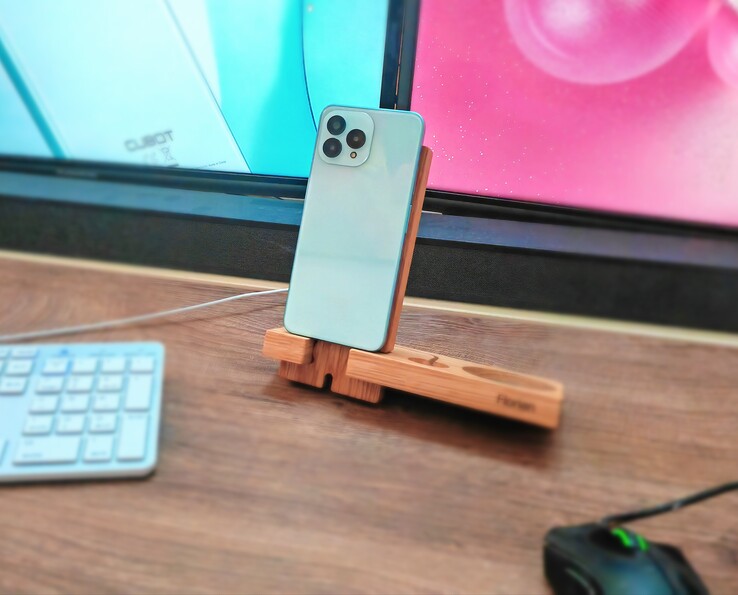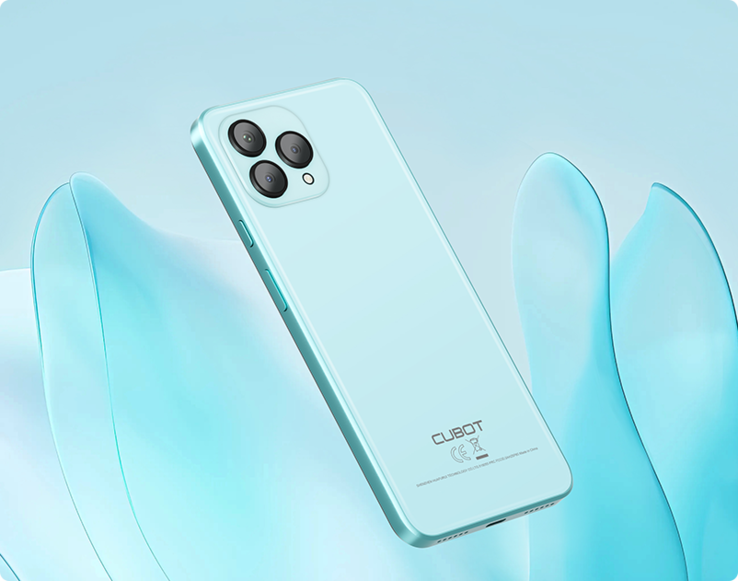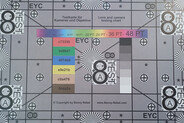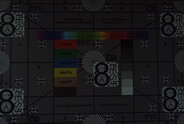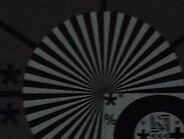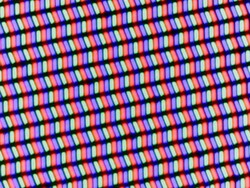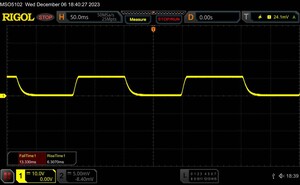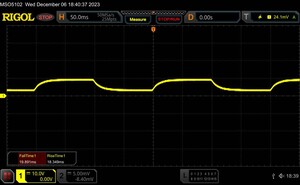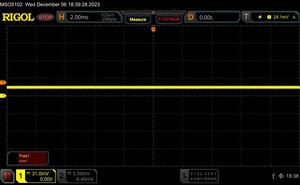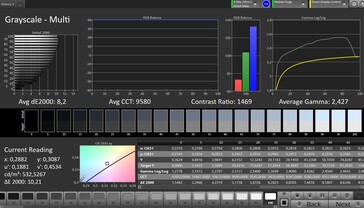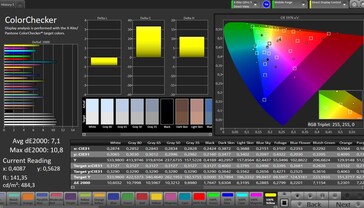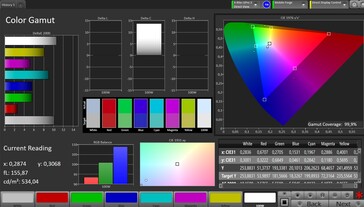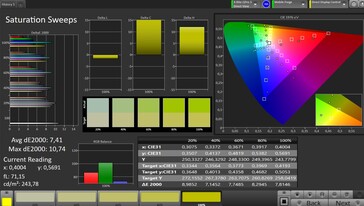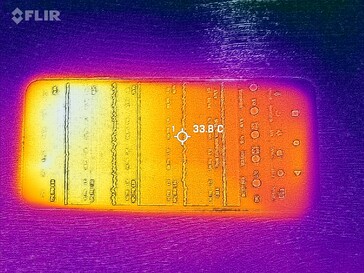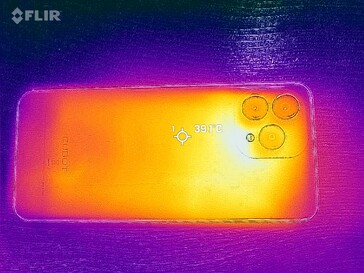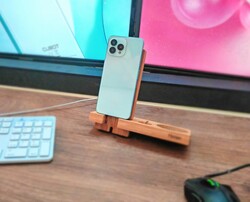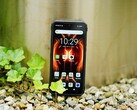Cubot P80 smartphone in review – Massive storage and full HD display for under $200 ↺
Potential Competitors in Comparison
Notebookcheck Rating | Data | Model | Weight | Storage | Display size | Resolution | Price from |
|---|---|---|---|---|---|---|---|
| 76.6 % v7 (old) | 12 / 2023 | Cubot P80 Helio MT8788, Mali-G72 MP3 | 217 g | 512 GB UFS 2.1 Flash | 6.58" | 2408x1080 | |
| 79 % v7 (old) | 08 / 2023 | Xiaomi Redmi 12 Helio G88, Mali-G52 MP2 | 198.5 g | 128 GB eMMC Flash | 6.79" | 2460x1080 | |
| 78.7 % v7 (old) | 05 / 2023 | Nokia G22 T7200 (T606), Mali-G57 MP1 | 195 g | 64 GB UFS 2.2 Flash | 6.52" | 1600x720 | |
| 79 % v7 (old) | 04 / 2023 | Motorola Moto G13 Helio G85, Mali-G52 MP2 | 183.5 g | 128 GB eMMC Flash | 6.50" | 1600x720 |
Case and features - Heavy with lots of storage
The Cubot P80 is available in two storage options:
- 256 GB storage / 6 GB RAM: $179.99
- 512 GB storage / 6 GB RAM: $185.99
Even the smaller version offers an above-average amount of storage for the price range. Additionally, it features modern UFS 2.1 memory, which is significantly faster than the eMMC flash typically used in this class.
There is no 3.5 mm audio port, and the Bluetooth interface is not up to date with the older 4.2 standard, resulting in lower range and data rate capabilities.
On the positive side, the Cubot P80 includes NFC, enabling the use of mobile payment services. The USB-C interface is internally connected according to the USB 2.0 standard.
There are two color options depending on the storage variant: a lighter blue and pink for the 512 GB mass storage models, and a darker blue and purple for the Cubot P80 with 256 GB. Both versions are also available in classic black.
The Cubot P80 always comes in a plastic casing with a frame that offers a brushed look, while the back has a glass appearance. The camera module is slightly raised, and the three lenses protrude noticeably from the casing. In terms of weight, the Cubot P80 is not exactly light, weighing in at 217 grams.
The microSD reader shares a slot with one of the two SIM cards, requiring users to choose between dual SIM functionality and memory expansion. The reader performs quite well in the copy test and is generally on par with its class. This makes a memory card suitable for expanding the already ample flash memory, although users will have to accept a certain loss of speed during copying processes.
| SD Card Reader - average JPG Copy Test (av. of 3 runs) | |
| Average of class Smartphone (5.72 - 58.9, n=69, last 2 years) | |
| Cubot P80 (Angelbird V60) | |
| Motorola Moto G13 (Angelbird V60) | |
| Nokia G22 (Angelbird V60) | |
| Xiaomi Redmi 12 (Angelbird V60) | |
Cross Platform Disk Test (CPDT)
Communication, software and operation - No facial recognition possible
The Cubot P80 communicates with wireless networks through the WiFi 5 standard and achieved stable transfer rates in our test with the Asus ROG Rapture AXE-11000 reference router, although these rates were slightly lower than those of comparable devices.
Functioning as a 4G phone, the Cubot device allows users to establish fast internet connections on the go through the mobile network. While this is often effective during travel, it's important to note that the phone may not support frequencies for all countries worldwide, limiting its global compatibility.
Cubot provides a relatively pure version of Android 13 on the P80, free from unnecessary bloatware that might fill up storage space for advertising purposes. At the time of testing, the system software was up to date as of September 2023, though this information may be slightly dated. Cubot currently releases security updates and bug fixes approximately every three months. However, the producer does not specify the duration of phone support.
Regarding the display, the screen operates at a 60 Hz frame rate, limiting its ability to enhance response speed. Despite this limitation, the touchscreen is accurate and reliably accepts inputs. Positioned on the right-hand side of the housing, a large fingerprint reader recognizes fingers with accuracy, unlocking the phone from standby with minimal delay. It's important to note, that facial recognition is not an available option for unlocking the phone.
| Networking | |
| iperf3 transmit AXE11000 | |
| Motorola Moto G13 | |
| Xiaomi Redmi 12 | |
| Nokia G22 | |
| Cubot P80 | |
| iperf3 receive AXE11000 | |
| Motorola Moto G13 | |
| Xiaomi Redmi 12 | |
| Nokia G22 | |
| Cubot P80 | |
Cameras – The selfie camera is the highlight
The main camera of the Cubot P80 has a maximum photo resolution of 48 megapixels, but typically captures images at 12 megapixels by combining 4 pixels into one pixel, enhancing light sensitivity. While the camera offers an "Ultra HD" mode for full-resolution photos, this requires a few seconds for photo processing.
In the standard recording mode, the camera tends to produce somewhat dark images with room for improvement in terms of sharpness of detail. The contrast is low, resulting in a somewhat washed-out appearance. In challenging lighting conditions, such as very low light and high contrasts, the dynamic range is weak, with very bright and very dark areas lacking detail.
During the test lab, the main camera exhibits minimal contrast, and in very low light, the image remains roughly recognizable.
Despite these limitations, the P80 boasts three lenses on the back, including a macro camera with fixed focus and a resolution of 2 megapixels, suitable for quick snapshots. The third camera, although incapable of capturing photos, contributes to depth-of-field effects.
For selfies, the front-facing 24-megapixel camera utilizes the full resolution as standard, resulting in detailed photos that can be enlarged without issues. While the overall level of detail is satisfactory, it significantly drops in darker areas.
Image comparison
Choose a scene and navigate within the first image. One click changes the position on touchscreens. One click on the zoomed-in image opens the original in a new window. The first image shows the scaled photograph of the test device.
Hauptkamera PflanzeHauptkamera UmgebungHauptkamera Low Light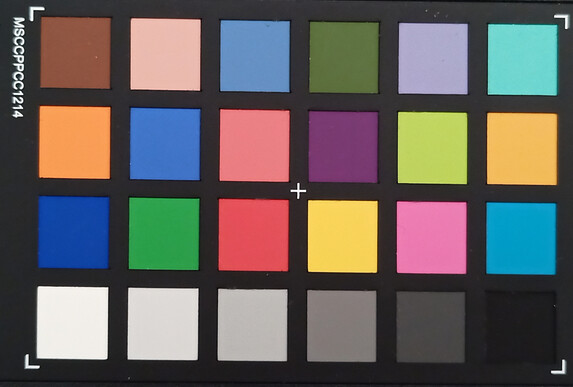
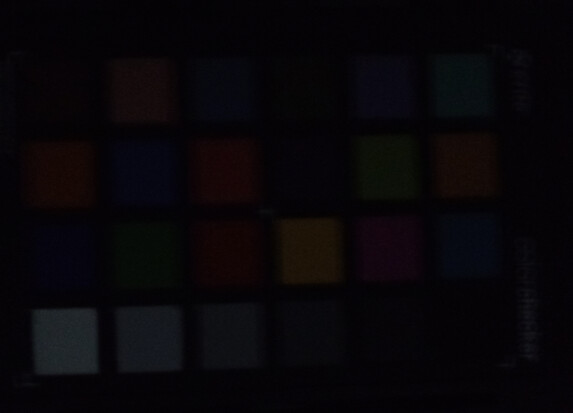
Display – No PWM, but a blue cast
The Cubot P80 features a high-resolution display within its price range, offering a panel with 2,408 x 1,080 pixels, providing an extended Full HD resolution. In comparison, the Xiaomi Redmi 12 also has a similar resolution but boasts a higher maximum frame rate of 90 Hz, whereas the Cubot P80 reaches a maximum of 60 Hz.
Brightness levels are satisfactory, with an average measurement of 533 cd/m². While not a record, it proves sufficient for outdoor use on moderately sunny days. The Cubot P80's screen exhibits a noticeable blue cast, evident in tests using a spectrophotometer and CalMAN software. Consequently, all colors deviate significantly from the optimum.
Although PWM flickering was not measured, the display does have relatively slow response times.
| |||||||||||||||||||||||||
Brightness Distribution: 83 %
Center on Battery: 544 cd/m²
Contrast: 1432:1 (Black: 0.38 cd/m²)
ΔE ColorChecker Calman: 7.1 | ∀{0.5-29.43 Ø4.78}
ΔE Greyscale Calman: 8.2 | ∀{0.09-98 Ø5}
99.9% sRGB (Calman 2D)
Gamma: 2.427
CCT: 9580 K
| Cubot P80 IPS, 2408x1080, 6.6" | Xiaomi Redmi 12 IPS, 2460x1080, 6.8" | Nokia G22 IPS, 1600x720, 6.5" | Motorola Moto G13 IPS, 1600x720, 6.5" | |
|---|---|---|---|---|
| Response Times | 12% | -50% | -50% | |
| Response Time Grey 50% / Grey 80% * (ms) | 38.2 ? | 34 ? 11% | 60.2 ? -58% | 48.5 ? -27% |
| Response Time Black / White * (ms) | 19.6 ? | 17.2 ? 12% | 27.7 ? -41% | 33.8 ? -72% |
| PWM Frequency (Hz) | ||||
| Screen | 11% | 19% | 19% | |
| Brightness middle (cd/m²) | 544 | 449 -17% | 674 24% | 555 2% |
| Brightness (cd/m²) | 533 | 437 -18% | 641 20% | 553 4% |
| Brightness Distribution (%) | 83 | 95 14% | 90 8% | 93 12% |
| Black Level * (cd/m²) | 0.38 | 0.5 -32% | 0.43 -13% | 0.29 24% |
| Contrast (:1) | 1432 | 898 -37% | 1567 9% | 1914 34% |
| Colorchecker dE 2000 * | 7.1 | 2.29 68% | 4.45 37% | 5.17 27% |
| Colorchecker dE 2000 max. * | 10.8 | 4.49 58% | 7.41 31% | 10.61 2% |
| Greyscale dE 2000 * | 8.2 | 3.7 55% | 5.1 38% | 4.5 45% |
| Gamma | 2.427 91% | 2.254 98% | 2.072 106% | 2.131 103% |
| CCT | 9580 68% | 6198 105% | 7799 83% | 7380 88% |
| Total Average (Program / Settings) | 12% /
11% | -16% /
6% | -16% /
5% |
* ... smaller is better
Display Response Times
| ↔ Response Time Black to White | ||
|---|---|---|
| 19.6 ms ... rise ↗ and fall ↘ combined | ↗ 13.3 ms rise | |
| ↘ 6.3 ms fall | ||
| The screen shows good response rates in our tests, but may be too slow for competitive gamers. In comparison, all tested devices range from 0.1 (minimum) to 240 (maximum) ms. » 42 % of all devices are better. This means that the measured response time is similar to the average of all tested devices (20.2 ms). | ||
| ↔ Response Time 50% Grey to 80% Grey | ||
| 38.2 ms ... rise ↗ and fall ↘ combined | ↗ 19.9 ms rise | |
| ↘ 18.3 ms fall | ||
| The screen shows slow response rates in our tests and will be unsatisfactory for gamers. In comparison, all tested devices range from 0.165 (minimum) to 636 (maximum) ms. » 56 % of all devices are better. This means that the measured response time is worse than the average of all tested devices (31.6 ms). | ||
Screen Flickering / PWM (Pulse-Width Modulation)
| Screen flickering / PWM not detected | |||
In comparison: 53 % of all tested devices do not use PWM to dim the display. If PWM was detected, an average of 8111 (minimum: 5 - maximum: 343500) Hz was measured. | |||
Performance, emissions and battery life - Older SoC without throttling
The MediaTek MT8788, primarily designed for tablets, is the chosen processor for the Cubot P80 smartphone, despite the more smartphone-oriented Helio P60 being available. The likely reason could be availability, as both chips were introduced in 2018 and have been succeeded by more modern counterparts with updated computing units.
As a result, the Cubot P80 lags in processor and graphics performance, a difference that becomes evident in benchmarks. In everyday use, the phone's menus generally operate smoothly, but it may experience slowdowns when running multiple apps or demanding programs.
On a positive note, the inclusion of fast UFS 2.1 flash storage is noteworthy. While the Nokia G22 demonstrates even higher speeds in this price range, the Cubot P80 strikes a good balance between performance and storage capacity with its 64 GB.
The maximum temperature rise under prolonged load is acceptable at 112.64 °F in room temperature conditions. Although, it's worth considering that the phone may heat up more on hot days. Notably, the SoC does not throttle even under constant load, as confirmed by 3DMark stress tests.
Despite multiple speaker grilles, the Cubot P80 has a single mono speaker on the bottom edge. While it can achieve moderate volume and offers decent mid-range reproduction, it may lack clarity at maximum volume and tends to overdrive the treble.
External speakers and headphones can be connected via USB-C or Bluetooth 4.2, supporting various wireless codecs including SBC, AAC, aptX, aptX HD, LDAC, and LHDC V, V3, and V4.
Equipped with a 5,200 mAh battery, the Cubot P80 outperforms comparable devices in terms of runtime, achieving 17:16 hours in the battery test. However, the Moto G13 and Nokia G22 manage slightly longer durations with smaller batteries. The phone supports a maximum charging rate of 18 watts, taking approximately 1:30 hours for a full recharge.
| PCMark for Android - Work 3.0 | |
| Average of class Smartphone (4507 - 28557, n=188, last 2 years) | |
| Xiaomi Redmi 12 | |
| Motorola Moto G13 | |
| Cubot P80 | |
| Average Mediatek MT8788 (6445 - 7226, n=2) | |
| Nokia G22 | |
| GFXBench | |
| on screen Aztec Ruins Normal Tier Onscreen | |
| Average of class Smartphone (6.2 - 166, n=211, last 2 years) | |
| Motorola Moto G13 | |
| Nokia G22 | |
| Xiaomi Redmi 12 | |
| Average Mediatek MT8788 (7.4 - 7.5, n=2) | |
| Cubot P80 | |
| 1920x1080 Aztec Ruins Normal Tier Offscreen | |
| Average of class Smartphone (3.4 - 367, n=211, last 2 years) | |
| Xiaomi Redmi 12 | |
| Motorola Moto G13 | |
| Cubot P80 | |
| Average Mediatek MT8788 (8.2 - 8.3, n=2) | |
| Nokia G22 | |
| on screen Aztec Ruins High Tier Onscreen | |
| Average of class Smartphone (0.85 - 144, n=212, last 2 years) | |
| Motorola Moto G13 | |
| Nokia G22 | |
| Xiaomi Redmi 12 | |
| Average Mediatek MT8788 (4.4 - 4.5, n=2) | |
| Cubot P80 | |
| 2560x1440 Aztec Ruins High Tier Offscreen | |
| Average of class Smartphone (1.2 - 129, n=211, last 2 years) | |
| Xiaomi Redmi 12 | |
| Motorola Moto G13 | |
| Cubot P80 | |
| Average Mediatek MT8788 (2.7 - 2.8, n=2) | |
| Nokia G22 | |
| 3840x2160 4K Aztec Ruins High Tier Offscreen | |
| Average of class Smartphone (0.54 - 62, n=212, last 2 years) | |
| Motorola Moto G13 | |
| Xiaomi Redmi 12 | |
| Cubot P80 | |
| Average Mediatek MT8788 (1.2 - 1.2, n=2) | |
| Nokia G22 | |
| Octane V2 - Total Score | |
| Average of class Smartphone (2228 - 121337, n=201, last 2 years) | |
| Motorola Moto G13 | |
| Nokia G22 | |
| Average Mediatek MT8788 (10032 - 10273, n=2) | |
| Cubot P80 | |
| Xiaomi Redmi 12 | |
| Cubot P80 | Xiaomi Redmi 12 | Nokia G22 | Motorola Moto G13 | Average 512 GB UFS 2.1 Flash | Average of class Smartphone | |
|---|---|---|---|---|---|---|
| AndroBench 3-5 | -30% | 24% | -34% | -2% | 254% | |
| Sequential Read 256KB (MB/s) | 510.3 | 300 -41% | 881 73% | 281.1 -45% | 682 ? 34% | 2223 ? 336% |
| Sequential Write 256KB (MB/s) | 351.3 | 272.5 -22% | 367 4% | 244.7 -30% | 281 ? -20% | 1838 ? 423% |
| Random Read 4KB (MB/s) | 132.3 | 84.8 -36% | 131 -1% | 99.4 -25% | 136.4 ? 3% | 295 ? 123% |
| Random Write 4KB (MB/s) | 143.2 | 115 -20% | 172 20% | 94.9 -34% | 106 ? -26% | 335 ? 134% |
Temperature
(±) The maximum temperature on the upper side is 44.8 °C / 113 F, compared to the average of 35.2 °C / 95 F, ranging from 21.9 to 247 °C for the class Smartphone.
(±) The bottom heats up to a maximum of 43.1 °C / 110 F, compared to the average of 34 °C / 93 F
(+) In idle usage, the average temperature for the upper side is 22.2 °C / 72 F, compared to the device average of 32.9 °C / 91 F.
3DMark Wild Life Stress Test
Speakers
Cubot P80 audio analysis
(±) | speaker loudness is average but good (78.5 dB)
Bass 100 - 315 Hz
(-) | nearly no bass - on average 29.6% lower than median
(±) | linearity of bass is average (10.9% delta to prev. frequency)
Mids 400 - 2000 Hz
(+) | balanced mids - only 3.3% away from median
(+) | mids are linear (5.8% delta to prev. frequency)
Highs 2 - 16 kHz
(+) | balanced highs - only 3.2% away from median
(+) | highs are linear (5.7% delta to prev. frequency)
Overall 100 - 16.000 Hz
(±) | linearity of overall sound is average (23% difference to median)
Compared to same class
» 51% of all tested devices in this class were better, 7% similar, 42% worse
» The best had a delta of 11%, average was 35%, worst was 134%
Compared to all devices tested
» 68% of all tested devices were better, 6% similar, 27% worse
» The best had a delta of 4%, average was 24%, worst was 134%
Motorola Moto G13 audio analysis
(±) | speaker loudness is average but good (78.9 dB)
Bass 100 - 315 Hz
(-) | nearly no bass - on average 27.6% lower than median
(±) | linearity of bass is average (10.4% delta to prev. frequency)
Mids 400 - 2000 Hz
(+) | balanced mids - only 4.5% away from median
(+) | mids are linear (4.8% delta to prev. frequency)
Highs 2 - 16 kHz
(+) | balanced highs - only 4.1% away from median
(±) | linearity of highs is average (8% delta to prev. frequency)
Overall 100 - 16.000 Hz
(±) | linearity of overall sound is average (22.1% difference to median)
Compared to same class
» 46% of all tested devices in this class were better, 7% similar, 47% worse
» The best had a delta of 11%, average was 35%, worst was 134%
Compared to all devices tested
» 63% of all tested devices were better, 6% similar, 31% worse
» The best had a delta of 4%, average was 24%, worst was 134%
Battery Life
| Battery Runtime - WiFi Websurfing | |
| Average of class Smartphone (12.1 - 54.1, n=211, last 2 years) | |
| Motorola Moto G13 | |
| Nokia G22 | |
| Cubot P80 | |
| Xiaomi Redmi 12 | |
Pros
Cons
Verdict – For storage fans and streaming grouches
The Cubot P80 stands out in the realm of budget-friendly smartphones due to its ample storage space, minimizing the need for compromises in terms of speed. Its long-lasting battery, use of pure Android 13, and regular updates further enhance its appeal.
The device features a high-resolution and reasonably bright screen without PWM flickering, though it is limited to a 60 Hz frame rate and has a noticeable blue tint. Unfortunately, the absence of Widevine L1 hinders HD streaming capability from major providers.
The camera system presents a mixed experience. The selfie camera impresses with its high resolution and acceptable detail, while the main camera falls short with low-contrast, low-detail images and underwhelming color reproduction.
The choice of a slightly older SoC results in the use of an older Bluetooth version, impacting range and transmission capacity. Whether this is noticeable in everyday use depends on individual usage habits. The Cubot P80 boasts a comfortable grip and a well-crafted plastic casing.
The Cubot P80 is a feasible option for consumers who do not prioritize streaming and want a lot of fast memory at a low price.
In comparison, the Xiaomi Redmi 12 offers better camera performance and overall capabilities, albeit with pre-installed advertising apps. The Nokia G22 is user-friendly for repairs and comes with a 3-year warranty.
Price & Availability
Cubot P80
- 12/07/2023 v7 (old)
Florian Schmitt
Transparency
The selection of devices to be reviewed is made by our editorial team. The test sample was provided to the author as a loan by the manufacturer or retailer for the purpose of this review. The lender had no influence on this review, nor did the manufacturer receive a copy of this review before publication. There was no obligation to publish this review. As an independent media company, Notebookcheck is not subjected to the authority of manufacturers, retailers or publishers.
This is how Notebookcheck is testing
Every year, Notebookcheck independently reviews hundreds of laptops and smartphones using standardized procedures to ensure that all results are comparable. We have continuously developed our test methods for around 20 years and set industry standards in the process. In our test labs, high-quality measuring equipment is utilized by experienced technicians and editors. These tests involve a multi-stage validation process. Our complex rating system is based on hundreds of well-founded measurements and benchmarks, which maintains objectivity. Further information on our test methods can be found here.




